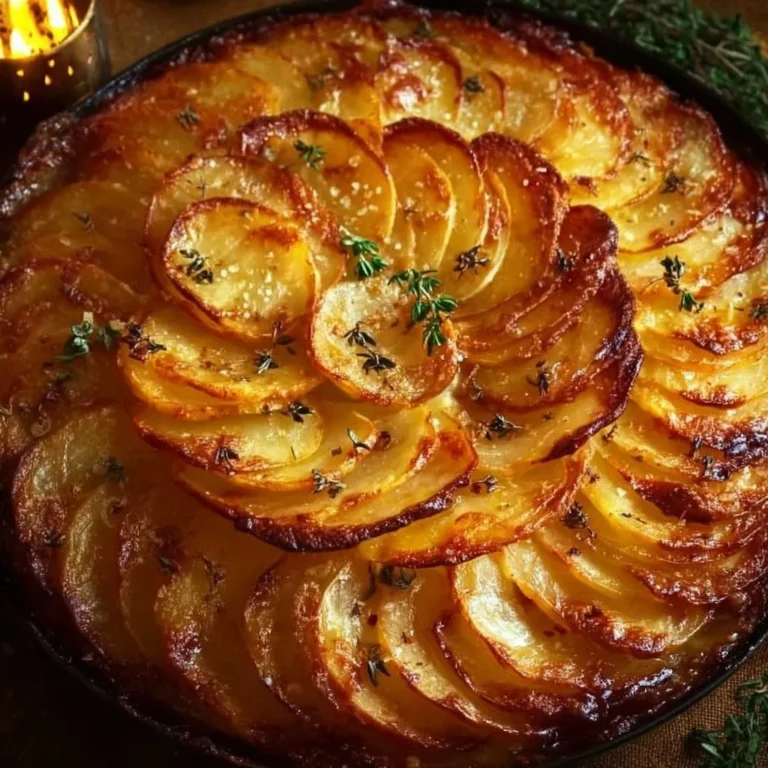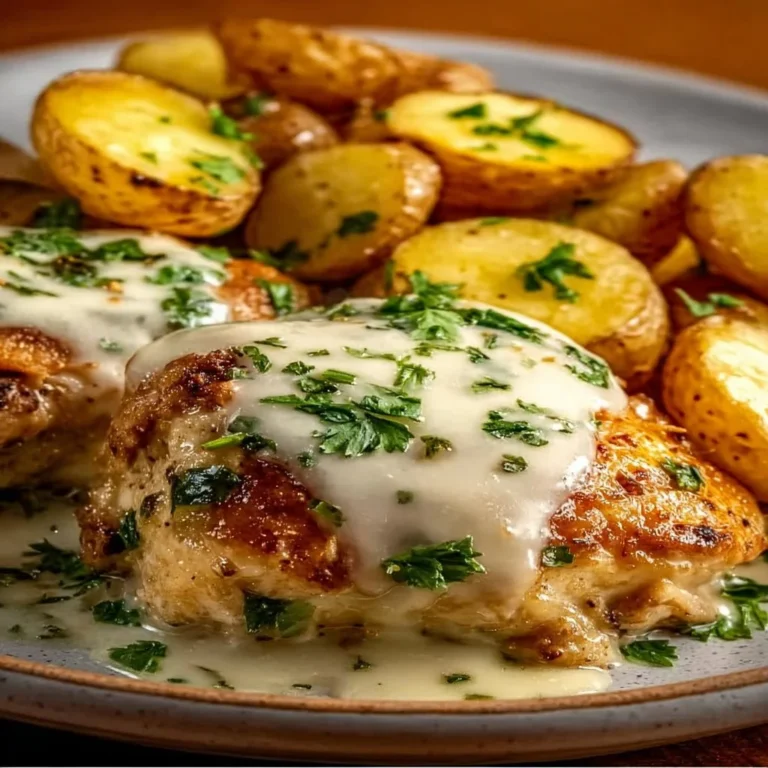Homemade Pesto Sauce
Why Make This Recipe
Homemade pesto sauce is a vibrant and flavorful addition to many dishes. Unlike store-bought versions, making pesto at home allows you to control the ingredients, ensuring freshness and quality. When you prepare your own pesto, you create a sauce that is aromatic, delicious, and full of the natural flavors of fresh basil. It is also quick and simple to make, requiring just a few ingredients that you might already have in your kitchen.
This sauce not only enhances the taste of your pasta but can also be used as a spread on sandwiches or as a tasty dip for vegetables. The beautiful green color of fresh basil adds a lovely visual appeal to any meal, making it not just enjoyable to eat but also to look at. Plus, making pesto at home reduces waste and allows you to personalize the flavor to suit your tastes. By adjusting the amount of garlic, cheese, or oil, you can create a pesto that’s uniquely yours.
Homemade pesto sauce is also a healthier option, as it has no preservatives and can be made with high-quality ingredients. If you are looking for a way to brighten up your meals or impress guests, making your own pesto is an excellent choice that yields delicious, fresh results.
How to Make Homemade Pesto Sauce
Making homemade pesto sauce is simple and straightforward. With just a handful of ingredients and a food processor, you can whip up this tasty sauce in no time. Here’s how to do it:
Ingredients
To make your own homemade pesto sauce, you will need the following ingredients:
- 2 cups fresh basil leaves
- 1/2 cup Parmigiano-Reggiano, grated
- 1/2 cup olive oil
- 1/4 cup heavy cream
- 2 cloves garlic, minced
- Salt and pepper to taste
These ingredients are likely easy to find at your local grocery store. Fresh basil is key to a rich and flavorful pesto, while the Parmigiano-Reggiano gives the sauce a savory, cheesy component. The heavy cream adds richness and depth, making the sauce smooth and enjoyable.
Directions
Follow these simple steps to make your homemade pesto sauce:
-
Combine Ingredients: Start by placing the fresh basil leaves, grated Parmigiano-Reggiano, minced garlic, salt, and pepper into your food processor. This is the base of your pesto, so make sure to add everything in the proper quantities for the best flavor.
-
Process the Mixture: Pulse the mixture in the food processor until everything is finely chopped. You want to break down the basil and garlic, allowing the flavors to meld together. Don’t rush this step; take your time to ensure you get a nice, even consistency.
-
Add Olive Oil: While the food processor is running, slowly drizzle in the olive oil. This is a crucial step because it helps emulsify the sauce, making it smooth. Continue processing until everything is fully combined and you have a nice, silky consistency.
-
Incorporate Heavy Cream: Stir in the heavy cream until it is fully incorporated. This will give your pesto a creamy texture, making it even more delicious.
-
Taste and Adjust: After mixing, taste the pesto. You can add more salt or pepper as needed. Remember, your taste preferences are important, so don’t hesitate to make it as flavorful as you like.
-
Serve: Your homemade pesto sauce is now ready to use! It can be tossed with pasta, spread on sandwiches, or served as a dip for fresh vegetables. The possibilities are endless!
How to Serve Homemade Pesto Sauce
There are countless ways to enjoy your homemade pesto sauce. Here are some popular serving suggestions:
-
Pasta: Toss freshly cooked pasta in a generous amount of pesto. It works particularly well with spaghetti, linguine, or penne. You can add grilled chicken, shrimp, or roasted vegetables for a more hearty meal.
-
Sandwiches: Use pesto as a spread on sandwiches. It pairs beautifully with turkey, grilled vegetables, or cheese. Spread a layer of pesto on a baguette, then fill with your favorite ingredients for a tasty sandwich.
-
Dips: Serve pesto as a dip with raw vegetables, breadsticks, or crackers. It’s a great appetizer for gatherings or parties.
-
Pizza: Use pesto as a pizza sauce base for a different take on classic pizza. Top with mozzarella cheese and your choice of toppings.
-
Soup: Swirl a spoonful of pesto into soups for a burst of flavor. It works great in tomato soup or creamy vegetable soups.
-
Marinade: Use it to marinate chicken or fish before grilling or baking. The flavors will infuse into the protein, making it deliciously aromatic.
How to Store Homemade Pesto Sauce
If you have extra pesto sauce, it can be stored for later use. Here are some effective ways to store your homemade pesto:
-
Refrigerator: Place the pesto in an airtight container. Press a piece of plastic wrap directly on the surface of the pesto to prevent oxidation and browning. It can last in the fridge for up to a week.
-
Freezer: For longer storage, pesto freezes well. You can fill ice cube trays with the pesto to create single-serving portions. Once frozen, transfer the cubes into a resealable plastic bag and store them in the freezer for up to three months. Whenever you need a quick meal, just take out a cube or two!
-
Layer with Oil: Another effective way to store pesto is to top the container with a thin layer of olive oil before sealing it. This helps preserve the vibrant green color and prevents it from becoming brown.
Tips to Make Homemade Pesto Sauce
Making the best homemade pesto sauce can be easy with the right tips:
-
Use Fresh Ingredients: Fresh basil is the star of this recipe, so use high-quality, vibrant basil leaves for the best flavor. Avoid wilted or browning leaves.
-
Toast the Nuts: If you want to add nuts to your pesto, consider toasting them lightly in a pan. This enhances their flavor and adds a nice depth to the sauce. Pine nuts are traditional, but you can also use walnuts or almonds.
-
Adjust the Garlic: If you enjoy a strong garlic flavor, don’t hesitate to add an extra clove or two. Conversely, if you prefer a milder taste, use less garlic.
-
Experiment with Cheese: While Parmigiano-Reggiano is a classic choice, you can experiment with other cheeses like Pecorino Romano or even a dairy-free cheese option for plant-based diets.
-
Add Citrus: A squeeze of lemon juice or lemon zest can brighten the flavor of your pesto and provide a refreshing touch.
-
Blend to Desired Consistency: Some prefer a chunkier pesto while others like it smooth. Adjust your blending time based on your preference.
Variation
While the classic pesto is made with basil, there are many variations you can try:
-
Arugula Pesto: Substitute arugula for basil for a peppery twist. This can add more complexity to the flavor.
-
Spinach Pesto: Use spinach instead of basil for a milder taste and increased nutrients.
-
Herb Mixes: Combine a variety of herbs like parsley, cilantro, or mint for unique flavors. A mixture can make for a very delicious and fresh sauce.
-
Nut-Free Pesto: Simply omit nuts if you or someone you are serving has nut allergies. You can increase the cheese or add hemp seeds for added creaminess.
-
Vegan Pesto: Use nutritional yeast instead of cheese and increase the garlic for a delicious dairy-free version.
FAQs
1. Can I make pesto without a food processor?
Yes, you can make pesto without a food processor. Use a mortar and pestle to grind the basil, garlic, and salt together, then mix in the olive oil gradually. It may take longer but will yield a different texture.
2. How can I fix my pesto if it’s too thick?
If your pesto is too thick, simply add a little more olive oil to reach your desired consistency. You can also add a bit of water or some broth for a lighter pesto.
3. What is the best type of oil to use for pesto?
Extra virgin olive oil is the best choice for homemade pesto sauce. It has a rich flavor that complements the fresh basil and garlic beautifully.
4. Can I add other vegetables to my pesto?
Absolutely! You can add roasted red peppers, sun-dried tomatoes, or even cooked peas for added flavor and texture.
5. How do I know if my basil is fresh?
Fresh basil looks vibrant with dark green leaves. It should be fragrant and not wilted or yellowing. If you gently squeeze the leaves, they should feel firm and not too soft.
6. Is homemade pesto gluten-free?
Yes, homemade pesto sauce is gluten-free, making it a suitable option for those with gluten sensitivities. Just be sure to serve it with gluten-free pasta or other dishes.
By making homemade pesto sauce, you’ll add a burst of flavor to any dish while enjoying the process of creating something delicious from scratch. Try experimenting with different ways to serve, store, and modify this versatile sauce and savor the delightful results!
PrintHomemade Pesto Sauce
A vibrant and flavorful homemade pesto sauce made with fresh basil, Parmesan cheese, and olive oil, perfect for pasta, sandwiches, and more.
- Prep Time: 10 minutes
- Cook Time: 0 minutes
- Total Time: 10 minutes
- Yield: 4 servings 1x
- Category: Condiment
- Method: Blending
- Cuisine: Italian
- Diet: Vegetarian
Ingredients
- 2 cups fresh basil leaves
- 1/2 cup Parmigiano-Reggiano, grated
- 1/2 cup olive oil
- 1/4 cup heavy cream
- 2 cloves garlic, minced
- Salt and pepper to taste
Instructions
- Combine Ingredients: Place the fresh basil leaves, grated Parmigiano-Reggiano, minced garlic, salt, and pepper into a food processor.
- Process the Mixture: Pulse the mixture until finely chopped.
- Add Olive Oil: While processing, drizzle in the olive oil and continue until smooth.
- Incorporate Heavy Cream: Stir in the heavy cream until fully incorporated.
- Taste and Adjust: Adjust seasoning with more salt or pepper as needed.
- Serve: Use the pesto as desired on pasta, sandwiches, or as a dip.
Notes
For longer storage, freeze in ice cube trays and use as needed.
Nutrition
- Serving Size: 2 tablespoons
- Calories: 220
- Sugar: 1g
- Sodium: 150mg
- Fat: 22g
- Saturated Fat: 4g
- Unsaturated Fat: 16g
- Trans Fat: 0g
- Carbohydrates: 3g
- Fiber: 1g
- Protein: 3g
- Cholesterol: 15mg








